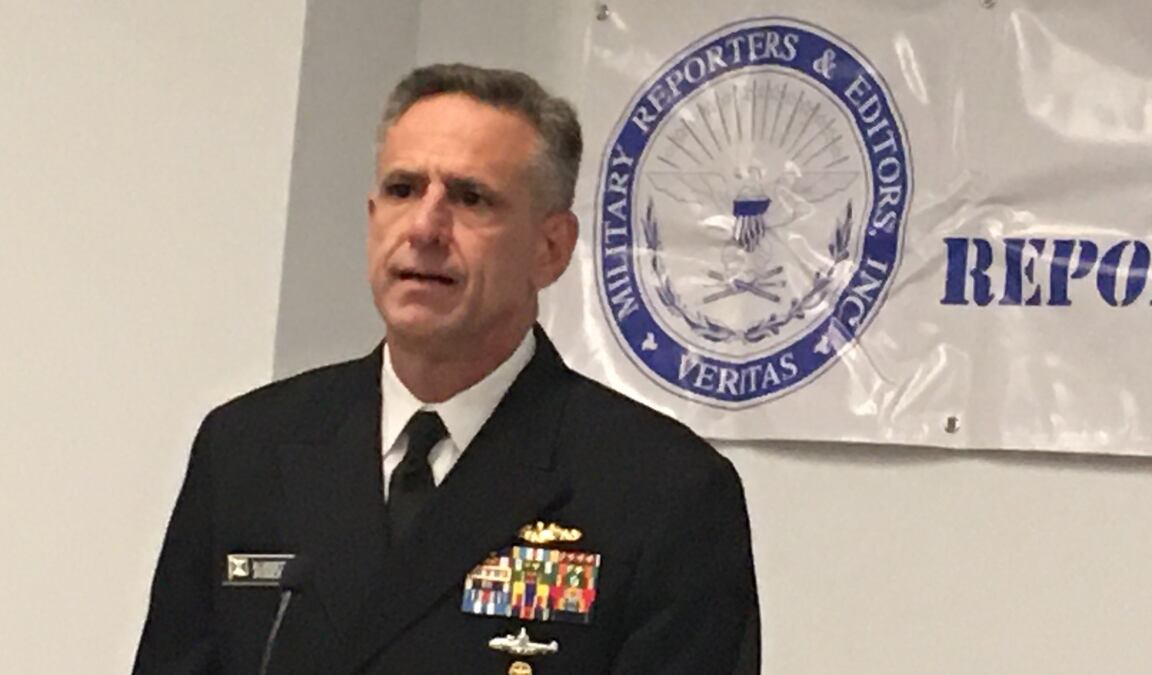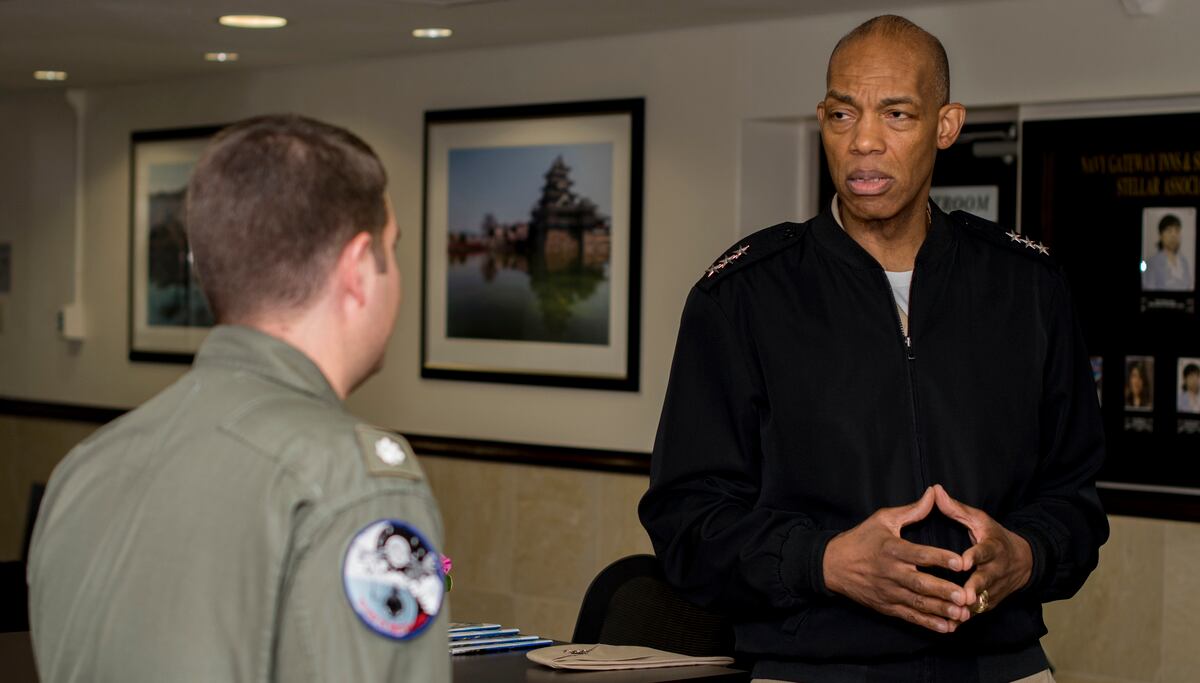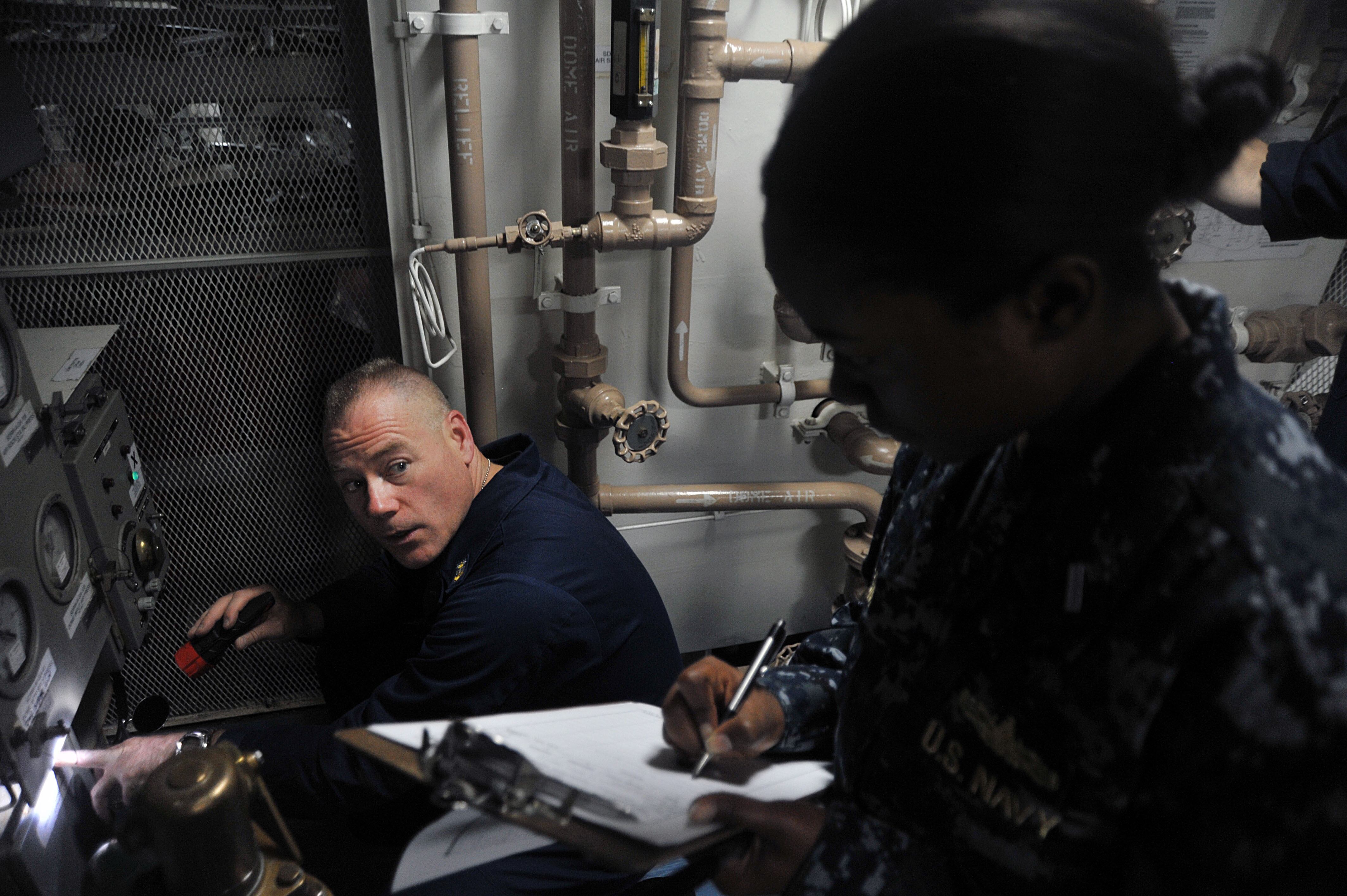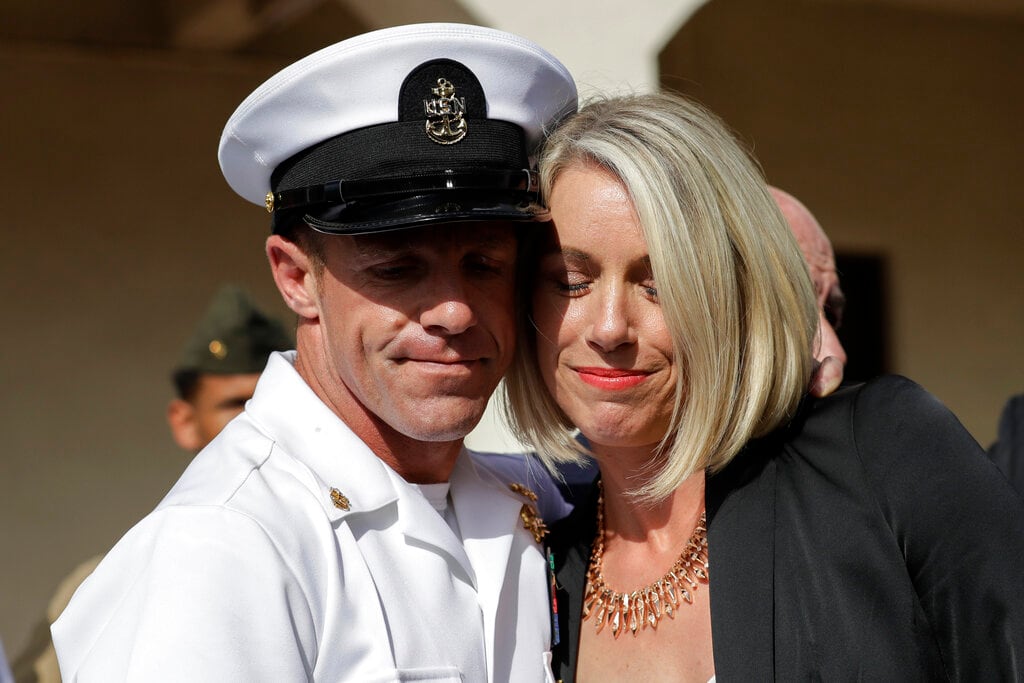Culture, a confusing organizational structure and unlawful command influence are plaguing the Navy’s legal community, a comprehensive review has found.
The review, completed last month but issued Friday, comes in the wake of high-profile cases that revealed ethical lapses in the Navy’s handling of the “Fat Leonard" public corruption scandal and prosecutorial misconduct that plagued the court-martial of Special Warfare Operator Chief Edward “Eddie” Gallagher — including the warrantless electronic surveillance of defense teams and the Navy Times’ editors’ email system.
Stacked atop those failures are senior leaders who unlawfully meddled in criminal cases.
They include the Navy’s previous top lawyer — Vice Adm. James W. Crawford III — who intervened in a SEAL rape case that was tossed out by the military’s highest appellate court, and Adm. James F. Caldwell, the head of the Navy’s Nuclear Propulsion Program, who relied on rickety advice from his designated legal adviser and trial counsel in the botched prosecution of Cmdr. Bryce Benson, the commanding officer of the guided-missile destroyer Fitzgerald during a fatal 2017 collision with a commercial vessel off Japan.
Ex-Secretary of the Navy Richard Spencer ordered the review in August.
Speaking to reporters in his office at the Pentagon Friday, Vice Chief of Naval Operations Robert P. Burke avoided diving into details about the cases but praised the first major review of the sea service’s legal community in nearly a decade as “thorough.”
“It’s comprehensive," he said. "It’s very transparent and it speaks for itself.”
RELATED

Among the report’s findings is that the Judge Advocate General’s Corps lacks a culture of grading its own performance and needs better training and professional development.
The blue ribbon panel drafting the review recommended that the Navy’s lawyer leadership issue governing principals to buttress JAG officers’ roles as naval officers and attorneys, as well as fostering a climate of “continuous improvement.”
The JAG Corps “needs to embrace a learning culture,” according to the report.
“Navy judge advocates are members of two honorable professions: the profession of arms and the profession of law. As uniformed attorneys, judge advocates support the profession of arms by enhancing personnel and unit readiness, ensuring good order and discipline, and providing sound legal advice in support of the commanders and the units they serve. A clearer understanding of Navy culture and values, and a judge advocate’s role as both a Naval officer and attorney, is required and must be continually reinforced throughout the community,” the panel wrote.
Base consolidations in the last decade also saw a merger of trial services into regional legal service offices that handle prosecution as well as other installation needs. While separate attorneys for victims handle some defense work, the panel recommended re-establishing independent trial service offices as well as adding a flag officer billet to oversee regional offices under the Naval Legal Service Command.
The command is currently overseen by the Navy’s deputy judge advocate general, who also has responsibilities overall to the Department of the Navy.
The current structure dilutes the accountability and leadership of the command by giving “too much scope of responsibility for one individual to be an effective commander of defense trial services, environmental, installation services, all of that stuff,” Burke said.
RELATED

Burke said that the workload for the legal community has “quadrupled” in the last decade while manpower has increased little. The Navy had a little less than 900 attorneys about a decade ago.
“We’re just now getting to 950, which were recommended in 2011. We’ve been that pressed for money to resource that 2011 to 2015 recommendation,” he said.
At the same time, the Navy went from holding about 1,200 court-martial proceedings annually to about 250 this year.
While the Navy is “cutting its losses earlier and sooner when we see behavioral issues,” Burke believes its attorneys are litigating less and working on cyber and environmental issues and sexual assaults.
It all goes back to making sure the attorneys have the resources they need, including feedback, Burke said.
The panel also recommended modernizing and streamlining data collection, case management and court reporting systems. Those systems are “essential” to improve efficiency, mitigate risk, provide accurate responses for data requests and enable trend analysis, the report says.
RELATED

The board also called for the sea service to get a grip on unlawful command influence, which the report labeled “an over-arching concern."
Dubbed the “mortal enemy of military justice,” UCI occurs when superiors utter words or take actions that coerce the outcome of courts-martial, jeopardize the appellate process or undermine public confidence in the armed forces by appearing to tip the scales of justice.
“Commanders and judge advocates at all levels must honor and respect convening authorities’ independence and scrupulously refrain from, deter, and report any improper attempt to influence the exercise of their discretion,” the panel wrote, calling on guidance, continuous training and vigilance to deter “inappropriate influences.”
Washington, D.C.-based attorney David P. Sheldon read the report Friday. He had a unique perch on two of the examples of unlawful command influence it highlighted.
He was the winning attorney in the appeal of Senior Chief Special Warfare Operator Keith E. Barry, who saw his sexual assault conviction overturned as a result of unlawful command influence partly blamed on ex-Navy JAG Vice Adm. Crawford.
And he represented Lt. Natalie Combs, a junior officer who was sent to court-martial along with Benson in the Fitz case.
Nine months ago, Sheldon was awaiting a ruling on his motion to dismiss her case for UCI when the Navy announced military prosecutors were abandoning their efforts against both Combs and Benson.
On Thursday, a Navy board of inquiry also ruled unanimously to retain Combs in the sea service.
To Sheldon, calling for better training and fiscal support for JAGs today mirrored the need for the same sort of resources for sailors before the deadly 2017 collisions of Combs’ Fitzgerald and its sister Arleigh Burke-class guided-missile destroyer, John S. McCain.
He told Navy Times in an email that the panel’s report "will be entirely meaningless if the Navy (Judge Advocate General’s Corps) does not provide the resources to implement the recommended changes.
"I am not optimistic that the ship won’t run aground again.”
Burke said he has met with today’s Navy Vice Adm. John Hannick to “discuss a way ahead” and in the future the two will lead an oversight council to make sure “that the corrective actions are properly implemented and that we do so with a sense of urgency.
"We’re still in the preliminary stages of developing that implementation plan but we intend to share it with you when it’s ready.”
RELATED

Courtney Mabeus-Brown is the senior reporter at Air Force Times. She is an award-winning journalist who previously covered the military for Navy Times and The Virginian-Pilot in Norfolk, Va., where she first set foot on an aircraft carrier. Her work has also appeared in The New York Times, The Washington Post, Foreign Policy and more.




